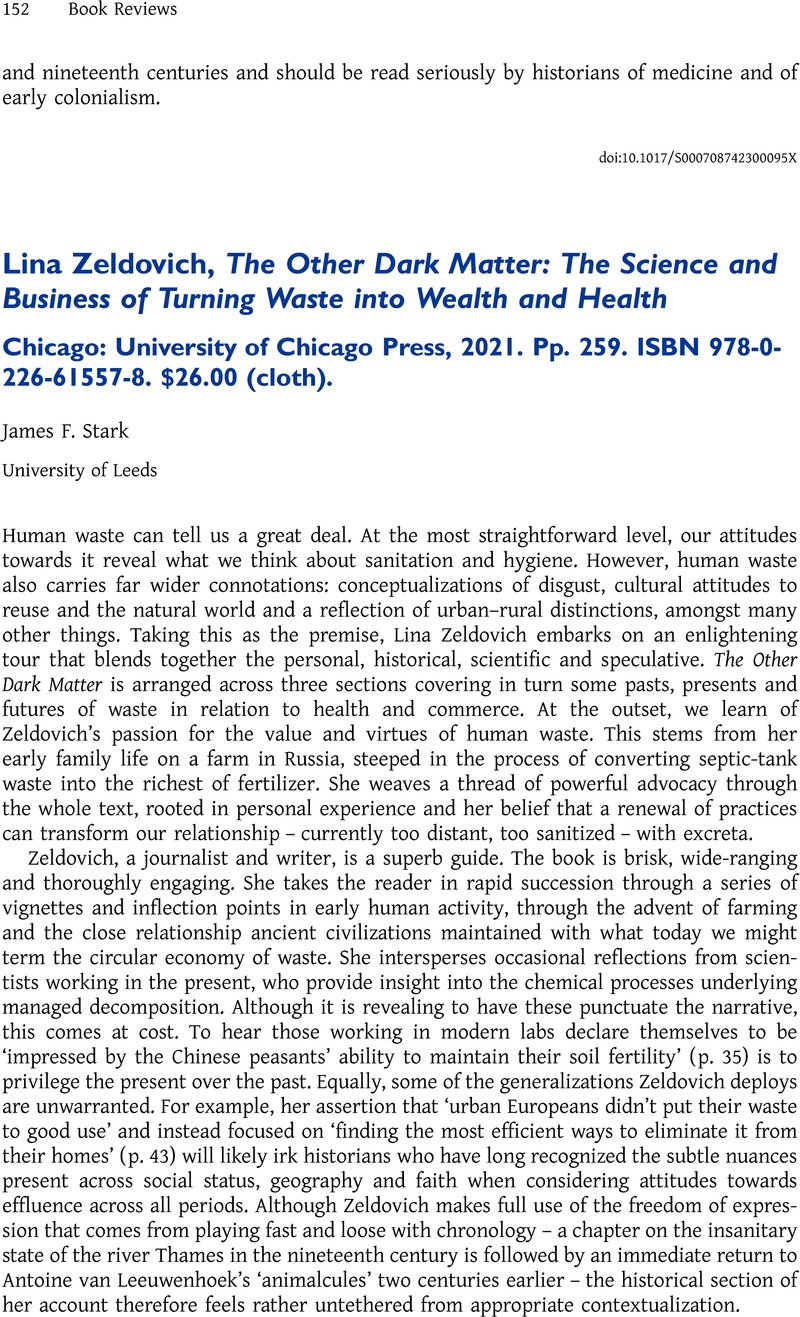No CrossRef data available.
Article contents
Lina Zeldovich, The Other Dark Matter: The Science and Business of Turning Waste into Wealth and Health Chicago: University of Chicago Press, 2021. Pp. 259. ISBN 978-0-226-61557-8. $26.00 (cloth).
Review products
Published online by Cambridge University Press: 03 November 2023
Abstract

- Type
- Book Review
- Information
- Copyright
- Copyright © The Author(s), 2023. Published by Cambridge University Press on behalf of British Society for the History of Science





